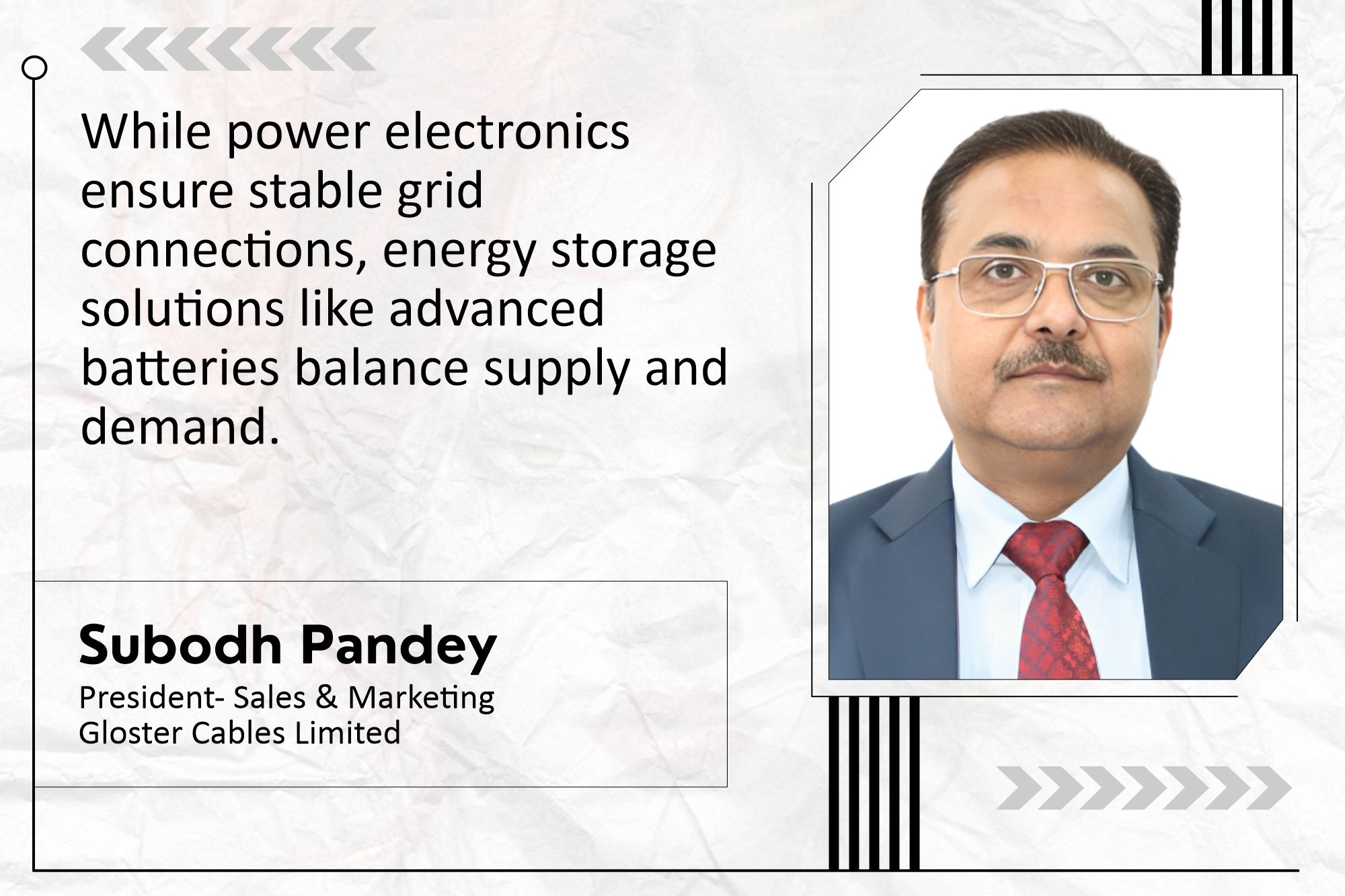Digitalisation and automation drive rising demand for grid software and cybersecurity
By EPR Magazine Editorial March 25, 2025 4:33 pm IST
By EPR Magazine Editorial March 25, 2025 4:33 pm IST

AI optimises energy distribution, predicts demand and enhances grid stability through intelligent data analysis.
The country’s renewable energy expansion boosts significant demand for advanced electrical equipment, necessitating smart grids, sensors, energy storage, and robust grid management systems. Digital technologies like IoT, AI and predictive maintenance are transforming grid operations by enhancing efficiency, reliability and resilience. The Production Linked Incentive (PLI) scheme further accelerates domestic manufacturing of critical components, reducing import dependency and promoting technological innovation. However, integrating 500 GW of non-fossil fuel energy by 2030 presents challenges, including manufacturing scale, supply chain limitations, grid stability and regulatory complexities. Addressing these challenges through collaboration, investment, and innovation is essential for the country’s successful energy transition.
How is renewable energy adoption driving demand for advanced electrical equipment, and how are digital technologies enhancing grid modernisation?
The rise of renewable energy is fuelling the demand for advanced electrical equipment. Smart grids, sensors and energy storage have become essential for grid modernisation. Variable renewables require advanced inverters for DC-AC conversion and grid integration. While power electronics ensure stable grid connections, energy storage solutions like advanced batteries balance supply and demand. Digitalisation and automation are boosting demand for grid management software and cybersecurity. Essentially, renewables are reshaping the entire electrical infrastructure.
Moreover, grid modernisation driven by renewable expansion heavily relies on digital technologies like IoT, AI and predictive maintenance. IoT enables real-time monitoring of grid components, providing data for efficient management and fault detection. AI optimises energy distribution, predicts demand and enhances grid stability through intelligent data analysis. Predictive maintenance uses AI and IoT data to anticipate equipment failures, reducing downtime and improving reliability. These technologies support smart grid implementation, facilitating better integration of distributed renewable sources. Additionally, digitalisation is helping to minimise transmission losses and enhance overall grid efficiency, ensuring a more resilient and sustainable energy infrastructure.
How is the PLI scheme boosting local electrical equipment manufacturing and supporting grid modernisation and renewable energy expansion?
The government’s PLI scheme drives substantial growth in local electrical equipment manufacturing. It incentivises domestic production, attracting investments and boosting capacity, particularly in renewable energy sectors like solar PV. This scheme promotes technological advancement, enhancing the competitiveness of Indian-made equipment. The government emphasises local manufacturing of critical components, such as semiconductors and advanced batteries, to curb import dependency. Developing robust domestic supply chains for raw materials is a priority. Incentives for R&D foster indigenous technology development. Specific PLI schemes strengthen crucial component sectors like those for ACC battery storage. These initiatives aim to establish India as a global manufacturing hub, reducing reliance on imports and bolstering its position in the global electrical equipment market. This coordinated approach supports India’s ambitious grid modernisation and renewable energy expansion goals.What challenges does India’s electrical equipment sector face in meeting the 2030 target set by the government?
The Indian electrical equipment sector faces significant challenges in integrating 500 GW of non-fossil fuel energy by 2030. Rapidly expanding renewable energy equipment manufacturing capacity is essential, ensuring stable access to critical raw materials and components. Technological innovation is crucial for advancing grid, storage and inverter technologies. Grid modernisation is necessary to accommodate variable renewable energy while maintaining stability and reliability. A skilled workforce is required to address gaps in manufacturing and maintenance expertise. Standardisation is essential for ensuring consistent quality and compliance with industry standards. Securing substantial financial investment is critical for infrastructure upgrades. Additionally, challenges in land acquisition for renewable projects and transmission lines persist. Maintaining a stable regulatory environment with clear policies will be vital to support growth. Addressing these challenges through collaboration and innovation is key to achieving the renewable energy goals set by the country.
We use cookies to personalize your experience. By continuing to visit this website you agree to our Terms & Conditions, Privacy Policy and Cookie Policy.